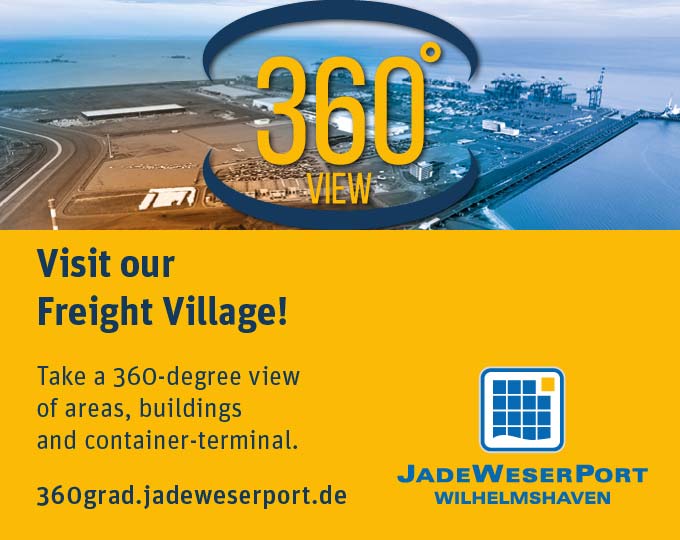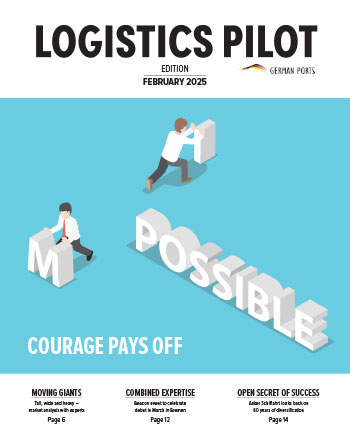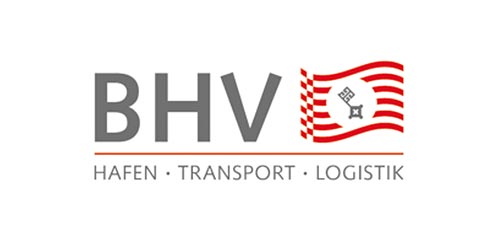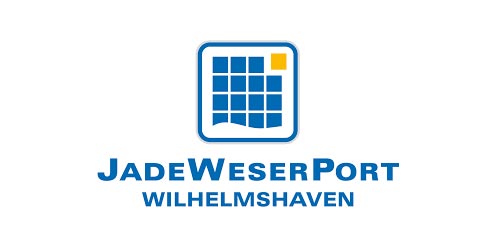Three terminals with three concepts in three federal states: Enns, Vienna and Graz are important gateways for the ports of Bremen and Wilhelmshaven.
Photos: Freepik, ohawlicek/CTE, Haider, Mariko, WienCont/Steve
The close cooperation with trading partners all over the world is just as essential for the ports of Bremen and Wilhelmshaven as it is for Austrian foreign trade. The bremenports event series Logistics Talk has already taken place several times in Enns, Vienna and Graz for this reason. The importance of the maritime hinterland was recently analysed in detail by the Institute of Shipping Economics and Logistics within the framework of the forecast of sea and hinterland traffic for the ports of Bremen. According to the study published in 2020, the Alpine republic is the second largest foreign market for the ports of Bremen with 166,000 TEU in 2018 and a market share of 23 percent. Compared to the base year 2013, this represents an increase in the hinterland volume of 99 percent. Only three percent of containers from Austria are delivered by truck, with 97 percent being delivered by rail.
Logistics Pilot
The current print edition - request it now free of charge.
ENNS
The Container Terminal Enns (CTE) is not far from the town of Linz. However, anyone who thinks that the transhipment that takes place there is rather placid, because the town of some 12,000 inhabitants is so tranquil is very much mistaken. The town benefits equally from its location in the federal state of Upper Austria as the largest industrial centre in the state and its proximity to Lower Austria with its important economic centres. An annual volume of 400,000 TEU is targeted for the container terminal this year. “That is quite remarkable, because we hardly ever offer continental transport,” emphasises Managing Director Otto Hawlicek. “We are the largest maritime location in Austria.”
Performance by the northern ports
Several factors are decisive for the choice of port: “The more trade lanes, the higher the call frequency of ships calling and the faster the turnaround times for the trains in the seaport, the more attractive the port becomes for cargo flows from the hinterland,” Hawlicek explains. He also likes to see the North Sea ports as geographically and economically closely linked maritime centres of excellence. “Bremerhaven as a specialist for America, Wilhelmshaven as a modern and efficient deep-water port and Hamburg as a gateway to Asia – these are the trade lanes that are most in demand. The North Sea ports can really score in this respect.”
The connection to them is correspondingly good. “There are daily connections to the ports in Bremerhaven, Wilhelmshaven and Hamburg, among others, which are handled overnight,” Hawlicek explains. “From Enns, the train systems then continue to Vienna, Linz and Graz.” There are also direct trains from these centres to the seaports, but a good part of them travel through Enns. Maritime traffic would simply have to pass the CTE here in order to get to Eastern, Central and Southern Austria. “If you will, we are the gateway for maritime traffic to and from Austria,” states the managing director.
Positive business development despite pandemic
The effects of the corona crisis in Enns have so far been limited: “We were able to make up for the slump of about 20 per cent in the spring from the summer months onwards,” states Hawlicek. “With a drop in volume of only two per cent compared to 2019, 2020 went extremely well for us – we got through the pandemic quite smoothly.” And this has continued so far: “We find ourselves are in a very good position compared to January and February 2020.”
Facts
Enns Container Terminal
Terminal area: 275,000 square meters
Annual capacity: 600,000 TEU
Crane systems: 4
Craneable tracks: 11
Block train runs per week: over 50
Shareholders: M. Kaindl Holzindustrie (51%) and Deutsche Bahn (49%)
More Information
VIENNA
Many large and international logistics companies have their Austrian headquarters in the state capital of Vienna and the immediate vicinity. Another large Austrian transhipment terminal exists with WienCont, which also handles around 400,000 TEU a year and handles up to 120 block trains a week. “A third of our cargo is maritime and goes to Bremerhaven, Wilhelmshaven and Hamburg,” reports Managing Director Harald Jony, “and our maritime business has grown in particular.” Continental business to Hungary and Turkey, which is offered daily by three large operators, has also developed positively. This is also interesting, of course, for the hinterland connection from the northern German seaports: “Maritime and continental complement each other well,” emphasises Jony.
Moreover, according to its managing director, WienCont is not only the largest empty container bureau in the country, but also the largest container trader. “We even make old steel containers fit again for project runs and one-way shipping,” states Jony.
Driving growth and digitalisation
Digitalisation represents one of the current challenges. “Many processes are already paperless,” reports Jony, “and we want to drive that forward even further.” For example, the number plates on around 800 trucks are scanned every day when they enter the terminal so that they can be precisely located in the terminal at any time. The forklift drivers carry tablets equipped with software especially programmed for the WienCont terminal and therefore always know exactly where each container is. Despite all the activities, Jony should not lose sight of another topic, however. The managing director expects extreme growth: “In the first week of March, we had eight more trains to Germany and the Netherlands.” The art now is to drive growth and digitalisation in parallel.
Container repairs doubled
So far, the pandemic has not had a negative impact: “We didn’t notice anything in 2020, in fact, we had more business than ever,” states Jony. “If there was less cargo in the overall scheme of things, we would notice it immediately.” In contrast, container repairs increased by 50 percent at times. “Owing to the high demand for equipment, some customers also had to compromise on the condition of the containers, which was good for us, of course, because it meant that more heavily used boxes were also in demand,” reports the managing director. Their approximately 700 proprietary containers also helped to meet the demand.
Facts
Vienna Container Terminal
Terminal area: 200,000 square meters
Annual capacity: über 400,000 TEU
gantry cranes: 3
Craneable tracks: 4
Block trains per week: 120
Shareholders: Port of Vienna (95.84%) and CN Logistics and Service Group (4.16%)
More Information
GRAZ
Styria not only has more forest and forest products than the whole of Switzerland put together, but also one of the most important freight transport centres south of the Alps in the form of Cargo Center Graz (CCG).
Export goods here include wood, paper and machines in particular, which are exported via Bremerhaven. The automotive segment is also of particular importance for Graz as a centre. After all, Graz is not only the largest plant in the world belonging to the automobile manufacturer Magna Steyr, but also the only one where vehicles are produced. “Graz, for example, is where the Mercedes-Benz G-Class, BMW 5-series and the Jaguar I-Pace are produced, which are then shipped in containerised form via Bremerhaven, the main export port,” reports Managing Director Christian Steindl.
For the partners of CCG, combined transport operations to northern ports, such as Bremerhaven and Hamburg, are offered regularly over a neutral logistics platform from the bimodal terminal operated in public-private partnership. “Our USP is the block train transport operation from Koper and Trieste to Graz and Enns, especially for US exports from Bremerhaven,” explains Steindl. Wilhelmshaven is also connected via Enns.
Slight growth expected for 2021
The biggest challenge during the pandemic so far has been the lack of availability of empty containers. “Compared to 2019, we handled 215,000 TEU last year, around ten percent less,” states the managing director. He expects slight growth again for 2021, however. “That depends heavily on the progress made with vaccinations and also on regional developments, of course.”
Second terminal to double throughput
The handling capacity in Graz to-date is expected to double in the next three years from 250,000 TEU to 500,000 TEU. “We are planning a second terminal over a 100,000 square-metre area, which will be put into operation in several stages by 2024,” reports Steindl. In order to optimise the processes further, a new IT solution is to be put into action at CCG by the end of the year: “Everything from the article to the ramp planning will then be digitalised so that the customer can be informed about the article at any time.” (cb)
Facts
Cargo Center Graz
Terminal area: 110,000 square meters
Annual capacity: 250,000 TEU
Gantry cranes: 2
Craneable tracks: 4
Block train connections per week: 15
Shareholders: Andradit Vermögensverwaltung, BWN Beteiligungen, Glanz Beteiligung, Ritter Properties, RLB – Beteiligungs- und Treuhandgesellschaft, RWL Transport, Wenzel Logistics, Steiermärkische Bank and Sparkassen Aktiengesellschaft








